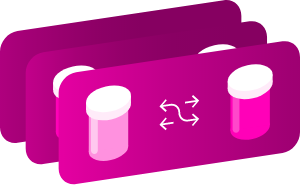索拉非尼:回顾其使用先进的肝细胞癌。
文章的细节
-
引用
复制到剪贴板 -
基廷通用,澳网
索拉非尼:回顾其使用先进的肝细胞癌。
药。2009;69 (2):223 - 40。doi: 10.2165 / 00003495-200969020-00006。
- PubMed ID
-
19228077 (在PubMed]
- 文摘
-
索拉非尼(多吉美)是一种口服multikinase抑制剂在欧盟批准的用于治疗肝细胞癌。单一疗法与索拉非尼延长总生存期和延迟时间进展的晚期肝癌患者不是潜在的候选人或动脉化疗治疗治疗。索拉非尼通常是在晚期肝细胞癌患者耐受良好。因此,索拉非尼代表先进的治疗肝细胞癌的一个重要进步,关心这个条件的新标准。bi-aryl尿素索拉非尼是一种口服multikinase抑制剂,抑制细胞表面受体酪氨酸激酶(如血管内皮生长因子受体和血小板源生长因子receptor-beta)和下游细胞内的丝氨酸/苏氨酸激酶(例如Raf-1,野生型b - raf和突变体b - raf);这些激酶参与肿瘤细胞增殖和肿瘤血管生成。体外、剂量依赖性抑制细胞增殖和诱导细胞凋亡被认为与索拉非尼在人类肝癌细胞线。索拉非尼证明抗肿瘤活性存在剂量依赖的相关性在人类肝细胞癌的小鼠异种移植模型。稳态等离子体浓度达到7天内患者的先进,耐火材料固体肿瘤接受每天口服索拉非尼。索拉非尼主要发生在肝脏代谢,调节通过细胞色素P450 (CYP) 3 a4和尿苷二磷酸glucuronosyltransferase 1 a9。 In advanced hepatocellular carcinoma, differences in sorafenib pharmacokinetics between Child-Pugh A and B patients were not considered clinically significant. Sorafenib may be associated with drug interactions. For example, sorafenib exposure was reduced by an average 37% with concomitant administration of the CYP3A4 inducer rifampicin (rifampin); sorafenib concentrations may also be decreased by other CYP3A4 inducers. Monotherapy with oral sorafenib 400 mg twice daily prolonged median overall survival and delayed the median time to progression in patients with advanced hepatocellular carcinoma, according to the results of two randomized, double-blind, placebo-controlled, multicentre, phase III trials (the SHARP trial and the Asia-Pacific trial). There was no significant difference between sorafenib and placebo recipients in the median time to symptomatic progression in either trial. The vast majority of patients included in these trials were Child-Pugh A. Combination therapy with sorafenib plus doxorubicin did not delay the median time to progression to a significant extent compared with doxorubicin alone in patients with advanced hepatocellular carcinoma, according to the results of a randomized, double-blind, phase II trial. However, the median durations of overall survival and progression-free survival were significantly longer in patients receiving sorafenib plus doxorubicin than in those receiving doxorubicin alone. Combination therapy with sorafenib plus tegafur/uracil or mitomycin also showed potential in advanced hepatocellular carcinoma, according to the results of noncomparative trials. Monotherapy with oral sorafenib was generally well tolerated in patients with advanced hepatocellular carcinoma, with a manageable adverse effect profile; diarrhoea and hand-foot skin reaction were consistently the most commonly occurring drug-related adverse events in clinical trials. In the SHARP trial, drug-related adverse events of any grade occurring in significantly more sorafenib than placebo recipients included diarrhoea, hand-foot skin reaction, anorexia, alopecia, weight loss, dry skin, abdominal pain, voice changes and 'other' dermatological events. A similar tolerability profile was seen in the Asia-Pacific trial. As expected given the addition of a chemotherapy agent, the adverse event profile in patients with advanced hepatocellular carcinoma who received combination therapy with sorafenib plus doxorubicin differed somewhat to that seen with sorafenib monotherapy in the SHARP trial. In patients receiving sorafenib plus doxorubicin, the most commonly occurring all-cause adverse events (all grades) included fatigue, neutropenia, diarrhoea, elevated bilirubin levels, abdominal pain, hand-foot skin reaction, left ventricular dysfunction, hypertension and febrile neutropenia.
DrugBank数据引用了这篇文章
- 药物
- 药物酶
-
药物 酶 类 生物 药理作用 行动 索拉非尼 UDP-glucuronosyltransferase 1 - 9 蛋白质 人类 未知的底物抑制剂细节 - 药物的相互作用Learn More" title="" id="structured-interactions-info" class="drug-info-popup" href="javascript:void(0);">
